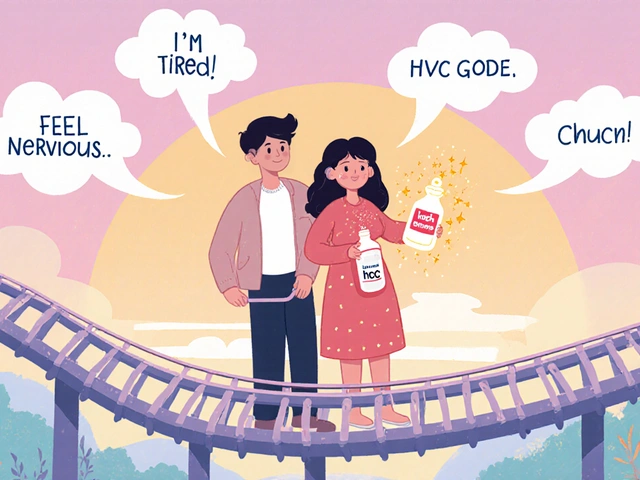Seasonal Allergies – Simple Relief Guide
Spring and fall can feel great until pollen sneaks into your nose and eyes. You might notice itching, sneezing, or a runny throat and wonder why you’re suddenly miserable. The good news? Most of the time you can tackle those symptoms at home with a few easy steps.
Know Your Triggers
Allergy season isn’t the same everywhere. In the north, tree pollen dominates early spring, while grasses take over late spring and early summer. In the south, ragweed can keep you sniffing well into autumn. Keep an eye on local pollen counts—many weather apps show a daily index. When the count spikes, try to stay indoors during peak hours (usually mid‑morning and early evening) and keep windows shut.
If you’re not sure what’s bothering you, a quick diary can help. Jot down when symptoms start, what you were doing, and any meds you took. Patterns often emerge, and you’ll know whether indoor dust mites or outdoor pollen are the main culprits.
Everyday Relief Strategies
First‑line relief usually starts with over‑the‑counter (OTC) options. Antihistamines like loratadine, cetirizine, or fexofenadine block the chemicals that cause itching and sneezing. They’re safe for most adults and work well for mild to moderate symptoms.
If a runny nose is your biggest problem, a nasal spray with oxymetazoline can shrink swollen blood vessels for a few hours. Just don’t use it for more than three days straight—otherwise you might get rebound congestion.
For stubborn congestion, a saline rinse or neti pot can flush out pollen and mucus. Use distilled or boiled‑then‑cooled water and a kit that’s labeled sterile; it’s cheap, drug‑free, and surprisingly effective.
When OTC meds aren’t enough, a doctor may prescribe nasal corticosteroids (like fluticasone or mometasone). These sprays reduce inflammation directly in the nasal passages and are best used daily, not just when you feel bad. Consistency is key—you’ll notice the biggest drop in symptoms after a week of regular use.
Some people find relief with leukotriene inhibitors (such as montelukast) especially if they have asthma alongside allergies. Talk to your healthcare provider about whether this fits your health picture.
Beyond pills and sprays, a few lifestyle tweaks can lower your exposure. Change clothes and shower after coming indoors from a high‑pollen area; this removes pollen from your skin and hair. Keep pets out of the bedroom, and wash bedding weekly in hot water to kill dust mites.
Air purifiers with HEPA filters help clean indoor air, and a dehumidifier can keep mold spores at bay. If you’re sensitive to mold, check basements and bathrooms for any damp spots.
Finally, consider natural helpers if you like them. Local honey, quercetin supplements, or butterbur extracts have some evidence for easing allergy symptoms, but they shouldn’t replace proven medicines. Always check with a pharmacist or doctor before mixing them with other drugs.
No matter how bad the sniffles get, you have tools to stay comfortable through the season. Track your triggers, choose the right OTC or prescription option, and make simple home changes. With a bit of planning, you’ll spend more time enjoying the weather and less time reaching for tissues.
Top 5 Seasonal Allergy Myths Debunked: Facts, Treatments, and UK Pollen Tips
Tired of sneezing at bad advice? We bust the top 5 seasonal allergy myths with UK facts, proven treatments, and simple daily tactics to breathe easier.





